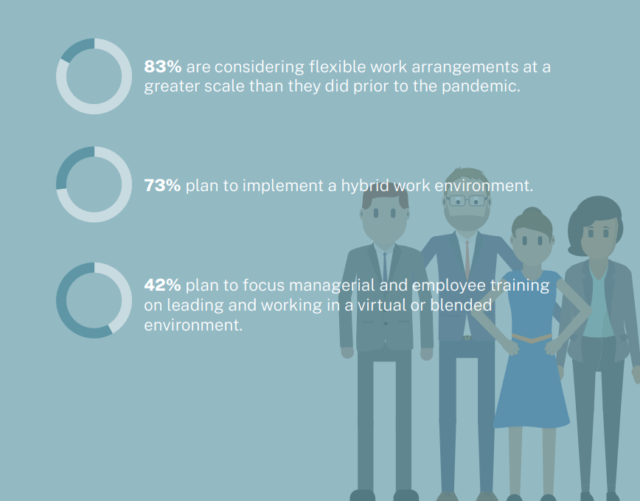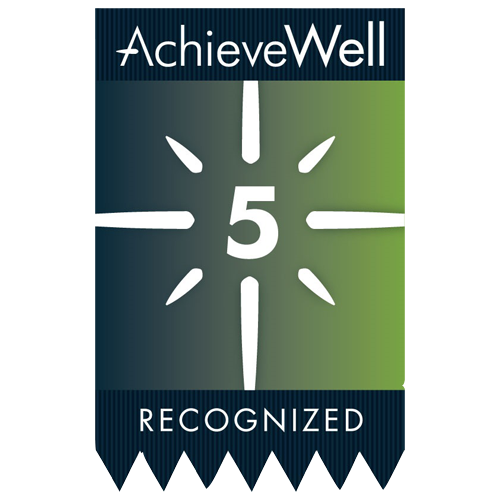Hybrid workforce strategies will factor into HR planning this year and beyond. The pandemic has resulted in thousands of employees working from their kitchen tables or living rooms rather than the office or other workplace. If that’s the case, organizations are likely in or will be in the process of deciding how much remote work will continue to play into the workplace. Furthermore, a hybrid model is becoming a growing standard for many organizations in some capacity— and might even be a common long-term option.
What Is the Hybrid Workplace?
In a hybrid workplace, some employees are on-site at a workplace facility, while others join remotely. This flexible work model is specifically designed to support a distributed workforce. In some form, a majority of workplaces are opting for either all-remote or hybrid remote arrangements.
One of the most common hybrid models may be “flex remote,” in which employees are on-site on set days. “Core hours” is another hybrid arrangement, in which employees are available during designated times. In both of those workplace models, employees are allowed to make their workday flexible outside of those set days or hours. Additionally, there are other considerations, such as whether certain departments or roles need to work on-site or can be just as effective working remotely.
Hybrid workplaces can look very different based on the organization’s priority of the following factors:
- Talent access
- Individual productivity
- Team productivity
- Cost of real estate
Advantages of Hybrid Workplaces
Despite remote work being forced upon some organizations during the pandemic, a long-term approach for a hybrid workplace offers several benefits to both remote workforces and employers. Advantages of hybrid workplaces include the following:
- Access to wide talent pools
- Increased employee productivity
- Stronger employee engagement
- Better collaboration
- Greater flexibility
- Healthy work-life balance
Challenges of Hybrid Workplaces
Like any new initiative or strategy, a hybrid workplace also has its shortcomings. Challenges of hybrid workplaces include the following:
- Potential for different time zones due to geographically dispersed teams
- Communication understanding due to availability of visual cues
- Lack of real-time collaboration
- Shortage of team-building opportunities and events
- Cybersecurity and reliance on IT infrastructure
If office locations or expenses are redundant or underutilized, employers may find a hybrid work model more costly than before. Employers can reduce the prevalence or impact of such challenges by being intentional about decisions and trade-offs. It’s crucial for employers to be empathic and listen to individual employee needs while also being creative when developing connected and effective workplace solutions.
Thinking Ahead
Most organizations have norms in place for on-site employees and now need to adapt to a mirroring set of standards for those working remotely. To best accommodate all employees,
consider the following tips:
- Create an open chat—Chat tools can facilitate dialogue for both remote and on-site employees. Channels can be created for efficient work-related communication—or even as a way to replace water cooler conversations and help build camaraderie within teams.
- Plan meetings to be friendly to all employees—Remote employees attending a meeting via a conference line or video platform can be just as active as those sitting in the conference room chairs. At the beginning of a meeting, leaders should introduce participants joining remotely, and ensure that all participants have a chance to share their thoughts or ideas.
- Be transparent about remote work expectations and decisions—There are a variety of reasons why some employees may be expected to work on-site while others are granted the opportunity to work remotely. By being transparent about decisions, employers can facilitate a friendly and open environment for distant teams to effectively collaborate.
Hybrid work models will look different for every organization. But as your organization puts return-to-work plans to action, it may be time to start thinking about what the future will look like for your workplace, and create a strategy that works for all employees—regardless of their locations.






